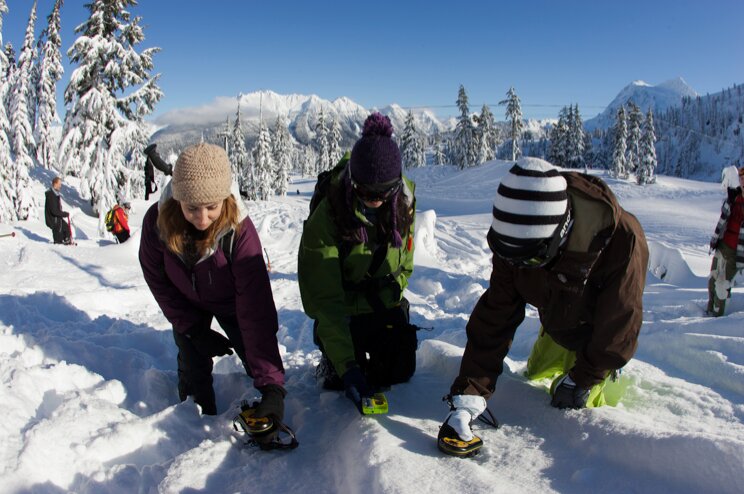
Seven people have died since 1999 in the backcountry surrounding the Mt. Baker Ski Area, something that MBSA’s operations manager Gwyn Howat does not forget. She can name every avalanche or deep-snow immersion victim by name, and she runs into family of the deceased in grocery stores around Bellingham. Despite this, Howat respects everyone’s right to shred powder. She doesn’t mind if you head into the backcountry from the ski area – she just wants you to be safe, educated, and responsible while doing it.
That mind-set goes for the entire MBSA operation. The ski area has been independently owned for its entire existence, a state of affairs that has let management carve their own path. It was one of the first ski areas to allow snowboarding when most of the resorts in North America were concerned about alienating their skiing customers. This proactive decision attracted snowboarders from all over the world and, in turn, led to a boom in accessing the backcountry outside the ski boundaries. This newfound popularity in backcountry use meant the ski area faced a new issue: Most users were not properly educated in avalanche safety and lacked the basic gear or knowledge to perform a companion rescue.
The catalyst for policy change at Mt. Baker came on February 14, 1999, when two young men lost their lives in an avalanche in Rumble Gully, outside the ski area. There’s really no way to describe how the families of the victims, the ski area management or the core group of Baker locals felt then or feel to this day. But Howat sums up this delicate subject well: “Death is permanent and the loss is not forgotten.”
Immediately after that tragedy, MBSA management met with the U.S. Forest Service, the Whatcom County Sheriff’s Office and members of Whatcom County Search and Rescue. They discussed the growing interest in backcountry use, the lack of avalanche education and knowledge at the recreational level and the importance of maintaining access to public lands. Within a week, Mt. Baker had created its own backcountry policy: “If you leave the ski area boundary into the backcountry or re-enter the ski area from the backcountry, you must have all of the following or you will lose your ski area privileges: 1. Avalanche transceiver and demonstrated ability to use it
2. A partner
3. A shovel
4. Knowledge of the terrain and your ability
5. Avalanche knowledge
6. Knowledge of local avalanche conditions”
To help support the knowledge portion of the policy and train people in avalanche rescue, the ski area opened the Mountain Education Center and began offering backcountry and snow safety courses to anyone who wanted to take one. The goal was to make the courses affordable and accessible and promote responsibility when entering the backcountry. In its infancy, the courses were held anywhere the ski area could find room. But owing to the popularity of the courses and increased backcountry use, the ski area now has a dedicated area on the second floor of the Heather Meadows ski patrol hut, paid employees, and several highly-qualified instructors. This is not a profit center for the ski area – at best it breaks even financially – but the goals are still the same.
Along with the education center, Mt. Baker hosts an annual event called the “Beacon Rally,” which is designed to educate participants on the proper use of avalanche safety equipment. One of the highlights of the event is the timed avalanche beacon search. Instructors are on hand to answer questions pertaining to all avalanche-related topics.
In its first year, the rally became the largest snow safety event in the world with more than 300 people attending. This year, it takes place on December 15. If you’re not a season pass holder, or ticket purchaser, please consider a donation to the Mountain Education Center.
Jeff Hambleton of Baker’s Mountain Education Center sums up the Mt. Baker attitude nicely: “We put a heck of an effort into providing backcountry and avalanche education at this area and it’s working.” With its 15-year-old backcountry policy, on-site avalanche courses and an annual safety event to help skiers and riders stay smart out there, Mt. Baker has been one of the most proactive ski areas in North America in addressing avalanche safety for their customers.
As the Mt. Baker management team puts it, “We understand the passion that people have for the mountains and snow here and we want everyone to live to ride another day.” x